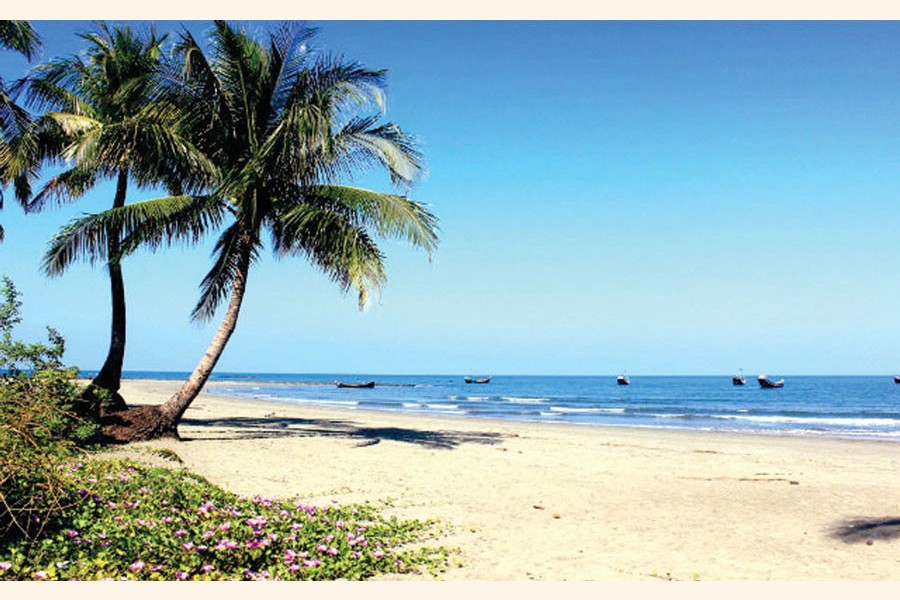
Published :
Updated :

Saint Martin's Island is one of the most attractive places for tourists in Bangladesh. The island is located at the mouth of the Naf river, nine kilometres south of Teknaf in Cox's Bazar. Studies have shown that the place was part of the mainland of Teknaf about 5,000 years ago. But gradually it went under the sea. Then, about 450 years ago, the southern part of present-day Saint Martin's Island surfaced. After 100 years, the northern part and the rest of the island surfaced. The island came to the notice of Arab merchants about 250 years ago. Arab merchants rested on the island during trade with Southeast Asia. They had named the island Jazira , which later became known as Narikel Jinjira.
According to the website of Bangladesh Tourism Corporation, the island is named after a Christian missionary Martin. Some fishermen settled on the island in 1890, some of them were Bengalis and some were from the Rakhine community. Gradually, it became a Bengali inhabited area. Over time, the island became one of the most attractive tourist destinations in Bangladesh.
The whole island is surrounded by clear water and coral reefs. Saint Martin's, the only coral island in the country, is also a breeding ground for sea turtles. According to various sources, Saint Martin has 68 species of corals, 151 species of algae, 191 species of mollusks, 40 species of crabs, 234 species of marine fish, 5 species of dolphins, 4 species of amphibians, 28 species of reptiles. There are 20 species of mammals, 175 species of plants, 120 species of birds, 2 species of bats and many other species. Many of these animals are now on the verge of extinction. These biodiversities are slowly being lost due to pollution.
Excessive tourist pressure, unplanned construction of hotels and motels, indiscriminate deforestation and dumping of various wastes have had a devastating effect on the environment of the island. In addition, biodiversity, including corals, is under threat due to various destructive activities, including constant pumping of water with electric pumps, construction of multi-storey buildings, sewerage of buildings and construction of open latrines to meet the demand of tourists.
The 8.3 square kilometre island has a permanent population of about 10,000. Besides, an average of 10,000 more tourists stay there every day. The island has to take the pressure of 20,000 people. That is why the island is becoming so fragile that it has lost its natural beauty. The ground water level is depleting. Due to excessive tourist arrivals, a lot of potable water is extracted during the tourist season. As a result, salt water has appeared in more than 50 tube wells north of the island.
Saint Martin's Island is basically a coral island. Corals are extracted from the island in unplanned ways, which threatens the island's very existence. According to figures from early 2019, 25 per cent of St Martin's coral reef has been lost in the past seven years. Apart from this, due to various man-made obstacles, the environment for laying eggs by sea turtles has been ruined in the last five years.
Saint Martin's was declared an Environmentally Critical Area (ECA) in 1999 by the government. Several private organisations -- Save the Sea and the Wildlife Conservation Society -- are working to conserve marine biodiversity. But there is hardly any move on the part of the government to improve the environment, particularly the ecosystem. It is high time the authorities took a comprehensive plan to protect the island from further damage.
Md Shibbir Ahmed Tashfik is a Masters student and Research Assistant, Institute of Water and Flood Management (IWFM), Bangladesh University of Engineering and Technology (BUET).


 For all latest news, follow The Financial Express Google News channel.
For all latest news, follow The Financial Express Google News channel.